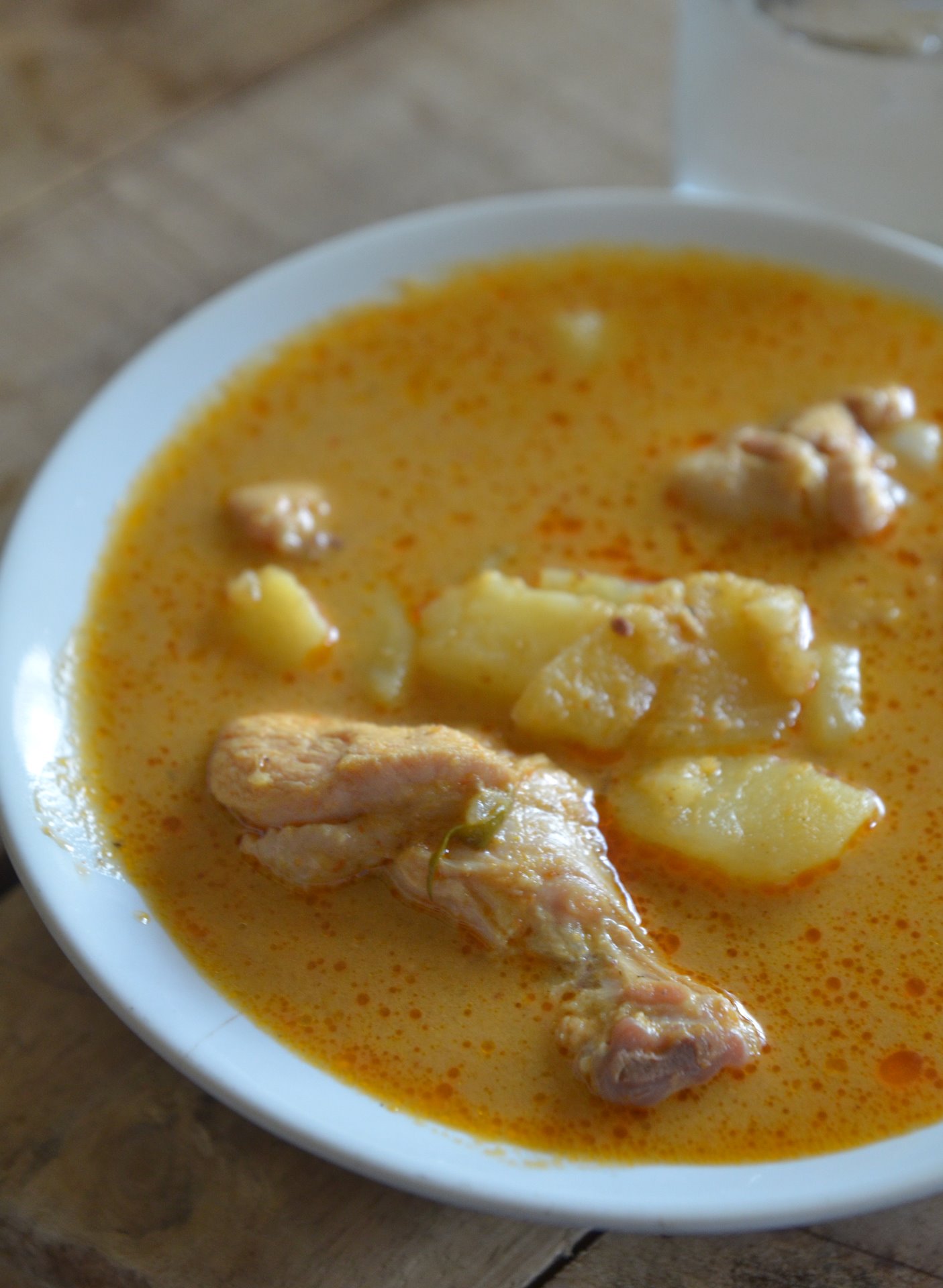Gaeng Karee Gai – Thai Yellow Curry
Thai food is delicious. Nobody debates this and plenty talk about it. Now, with all the attention that “super foods” are getting, it’s becoming increasingly evident that it is also incredibly healthy.
This is really only news to clinical science though. With all of fruits, vegetables, and variety on the Thai plate it should have been easy enough to guess it healthy even without a lot of our any of our current knowledge of phytochemistry and (adlkjadsf). Beyond that, the traditional medical traditions of Thailand, India, and China all understand the “natures” of all of the foods on the plate and all of the things used to season them.
What I mean by this is that they posses systems of calculating the effect of the food on the body on a basic physiological level, albeit a bit abstract in its expression. In the Chinese traditional medicine system, for instance, foods are assigned a taste and temperature nature, temperature being an important diagnostic expression in that system. This has nothing to do with the actual temperature of the food but the symptoms created by eating the food. Warming food would create improved circulation, body temperature, and a host of other more specific things. Cold ones having sort of the opposite. Still pretty vague, but it makes sense when you see some actual dishes, like warming chili in spicy curry and cooling yogurt in raita in India. Ginger, ginseng, coffee, and chili are all warming foods, all are vasodialators (they expand the blood vessels and make blood flow more freely) and all make you feel warmer and somewhat energized. It actually makes a lot of sense.
The alignment of the these natures lines up reasonably well throughout the systems and the element of taste nature in particular is present and fundamental in the arrangement of many dishes, in this case we’ll look at a coconut curry Gaeng Karee Gai.
The standard mix for a yellow curry in Thailand (with or without the coconut milk) includes cumin, coriander seed, garlic, salt, lemongrass, turmeric, mace and cardamom. Everything there has some powerful medicinal properties but we’ll focus on turmeric and coconut milk.
Turmeric, along with coconut milk, has gained a lot attention recently as a powerful anti-inflammatory agent, even stronger than some anti-inflammatory drugs. But it has to be mixed with a fat in order for your body to absorb it. As it would happen, coconut milk has been found to increase your body’s absorption of fat soluble nutrients, and it’s loaded with good fat. It also affects the inflammation process in two different ways, unlike drugs, making it more dynamically effective in the reduction of inflammation and the pain related to it. The combination of coconut milk and turmeric. This is overall a warm dish, with both coconut milk and turmeric, as well as many of the other spices being of a warming nature. The dish is balanced by the presence of potato and sometimes carrot and green vegetables, since you have to balance.
And was with every Thai dish, ALL the flavors are represented!


